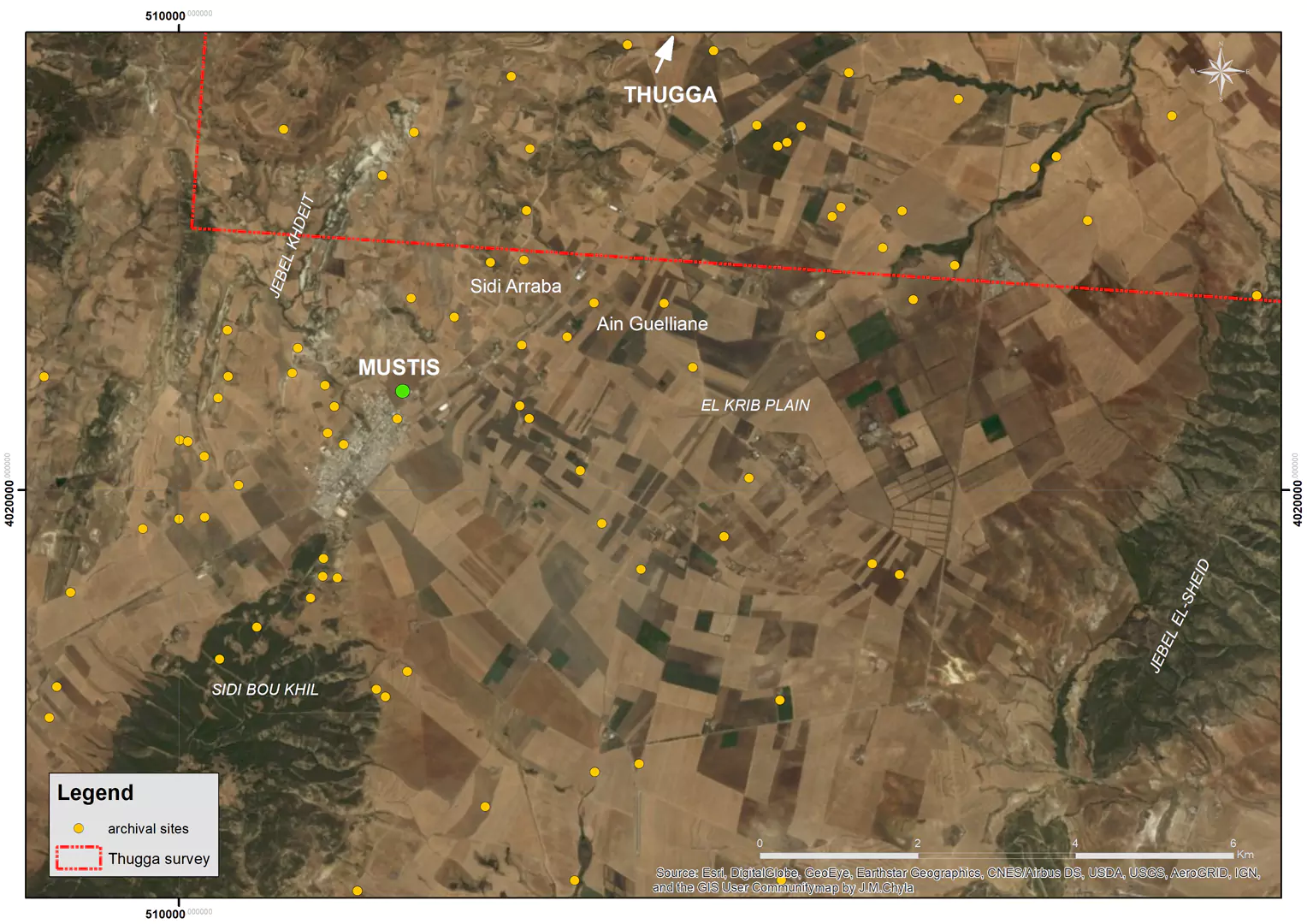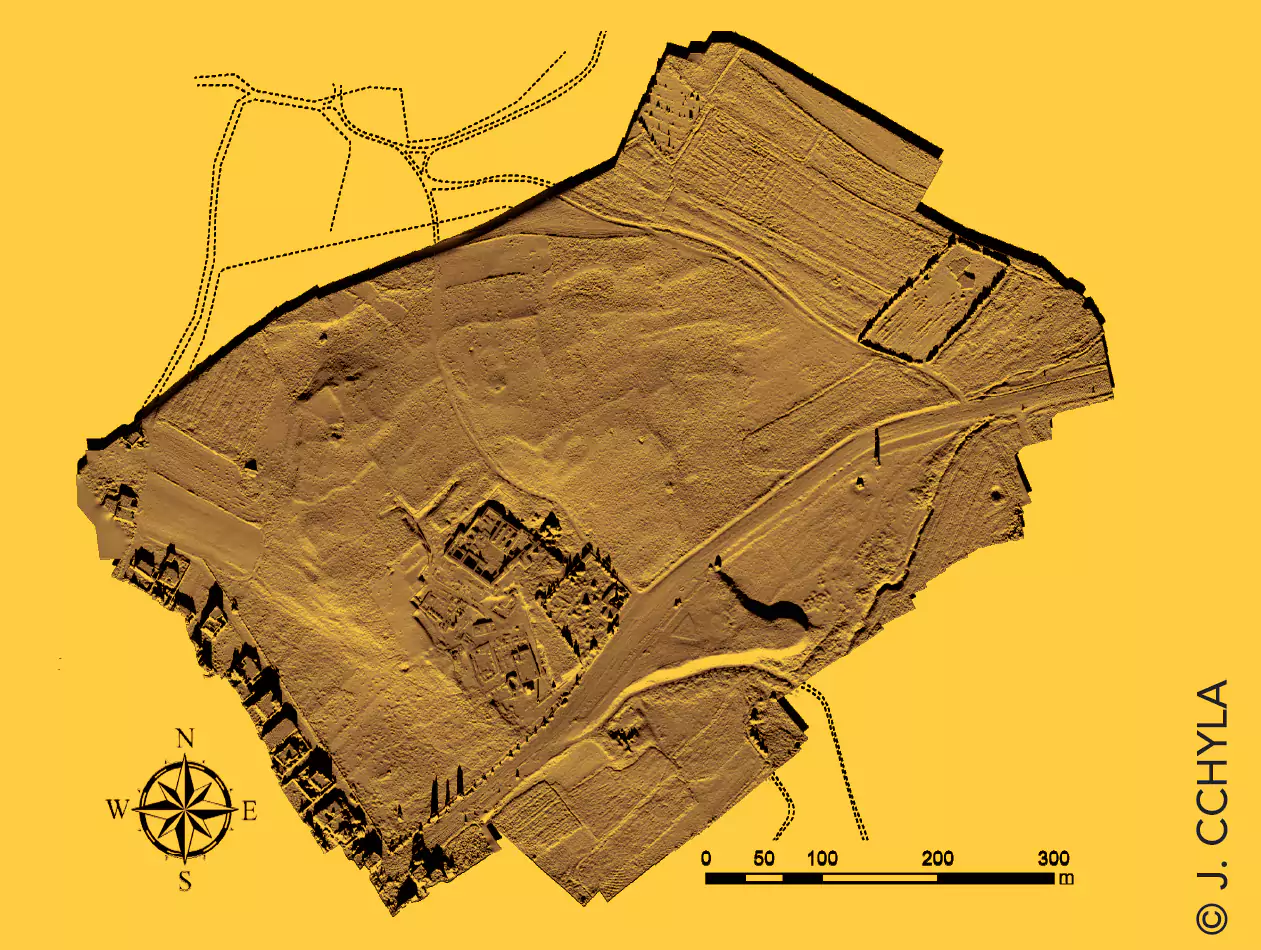
18 Archaeological prospection of Musti microregion
Described many times in the works of medieval and modern geographers, travellers and surveyors, the Musti region has been the focus of interest for explorers and geographers since the end of the 19th century. Intentions focused on identifying the ancient remains and ruins visible on the surface, mainly Roman, late antique and medieval archaeological sites. In 2021, we began a methodical survey of the region in order to explore its remaining archaeological potential and assess its state of conservation, as well as to identify any threats that could undermine the integrity of the remains, sites and outlying archaeological areas. In addition, to understand the multiple relationships between the town, the city, of Musti and its rural hinterland.
The main archaeological sites identified and inventoried in the Musti region are rural settlements, farms and a wide range of buildings of varying typology and function, generally dating from the Roman and Byzantine periods. These were once occupied by a heterogeneous rural population, including farmers and craftsmen, who supplied the town of Musti with food, agricultural produce and other elements of subsistence. Our analytical and synthetic approach consists of documenting all the data collected using new technologies and field methods, Mobile GIS. Using smartphones equipped with GIS applications to locate, describe and photograph the remains and objects visible on the surface of the sites, some of which date back to the Numidian period.
The numerous surveys have also enabled us to discover and understand fascinating elements of the complex history of the Musti rural landscape, land occupation methods, rural activities and the ways in which populations were integrated into a fairly heterogeneous landscape. These discoveries, some of which have never been made before, could open up new perspectives and perspectives for future research into rural archaeology, settlement and the dynamism of territories during antiquity, in the northern High Tell and even in proconsular Africa.


